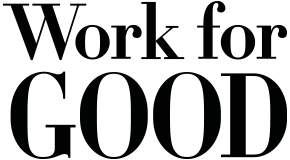The key to leading a diverse team: Communication
Following up on the insights of Emory University HR expert Peter Topping in parts one and two of his discussion on the advantages and upkeep of a diverse staff, we asked these three nonprofit executives about the communications tactics they use to keep their diverse teams humming along:
Sara Berney, Former Executive Director of Wholesome Wave Georgia, who led a small staff dedicated to expanding access to fresh, wholesome, locally-grown food.
Brian Bollinger, Former Executive Director of Friends of Refugees, whose cross-generational staff fosters abundant, flourishing communities for new Americans.
Jeremi Snook, President and CEO of Friendship Force International, who oversees a global team charged with maintaining cross-cultural exchange programs in 60 different countries.
On understanding everyone's communication needs
Sara Berney: As a team comprised of Millennials and Gen-Xers who are driven by a do-it-yourself ethos, it was crucial that our team build our office culture together. That meant creating space for everyone to share their ideas. Together, we decided to conduct all important conversations in person, and to create a weekly meeting for discussing questions, dreaming up solutions, and practicing curiosity. Immediately, team members felt empowered and engaged, and staff became less siloed and more collaborative.
Brian Bollinger: As your foremost “major donors,” team members deserve to be noticed and appreciated in the ways most meaningful to them. Cultural references can make instant connections across any divide – something I call, “Knowing and honoring the memes.” Take the time to understand mass media touchstones, or ask a team member how they observe a religious holiday. Even if you’re unsure, it’s much better to risk embarrassing yourself, and learn from your team, than to neglect what’s important to them.
Jeremi Snook: By knowing how a target audience – staffer, supporter, or any other stakeholder – prefers to stay informed, we are better able to anticipate how best to deliver key messages. For instance, our Baby Boomer stakeholders prefer face-to-face messages when possible – and technology like Skype can enable those one-on-one conversations across distances or even language barriers.
On finding the right communications tools
Snook: Over time, attempts to innovate or embrace too many channels can dilute or fragment your message. To correct this “message creep,” continually put yourself in your audiences’ shoes. It might make sense – logistically or economically – to put everything online and go paperless, but not if you leave people behind. For the health of our organization, we maintain room for those who prefer newsprint to Snapchat.
Bollinger: Getting communication right can mean making weird rules – that is, peculiar to others, but customized to your unique needs. At our organization, on-the-go communication is conducted using iPhones, and only iPhones. Why? Because hundreds of things work easier when everyone uses one operating system, and iPhones also lower the intergenerational learning curve.
Berney: We’ve been able to integrate new digital communications tools successfully by testing them before adopting them, and assigning each a specific purpose.
On encouraging honest, open internal communication
Berney: I’ve learned to practice saying “Yes, and…” instead of “No.” While our tech-savvy workforce might be abuzz over new platforms that I’m unsure of, I know that saying “No” would defy the culture of empowerment I’m being careful to create. For instance, when a staff member suggested using Slack, I said, “Yes, and let’s begin by using it strictly for communications about teambuilding activities.”
Bollinger: Because understanding and being understood can be a struggle in a diverse environment, our non-negotiable policy is to regard each other with goodwill. Whatever the issue – differing linguistic baselines, cultural blind spots – we respond as if the intention is well-meaning until proven otherwise. This builds a culture of trust, where we can have honest conversations about our differences.
On advancing the conversation
Berney: As a young organization, we’re positioned to benefit from others’ experience. I started by asking questions of leaders in the field, and encouraging our staff to do the same. It was clear that my staff members were looking for opportunities to learn from those with more experience, they simply needed my direction to help identify, approach, and connect with them.
Snook: One of the best investments is conferences and news subscriptions that inform staff about trends and breakthroughs. Because the future of your organization depends on engaging with young stakeholders, laying the groundwork to connect with them helps ensure ongoing impact.



